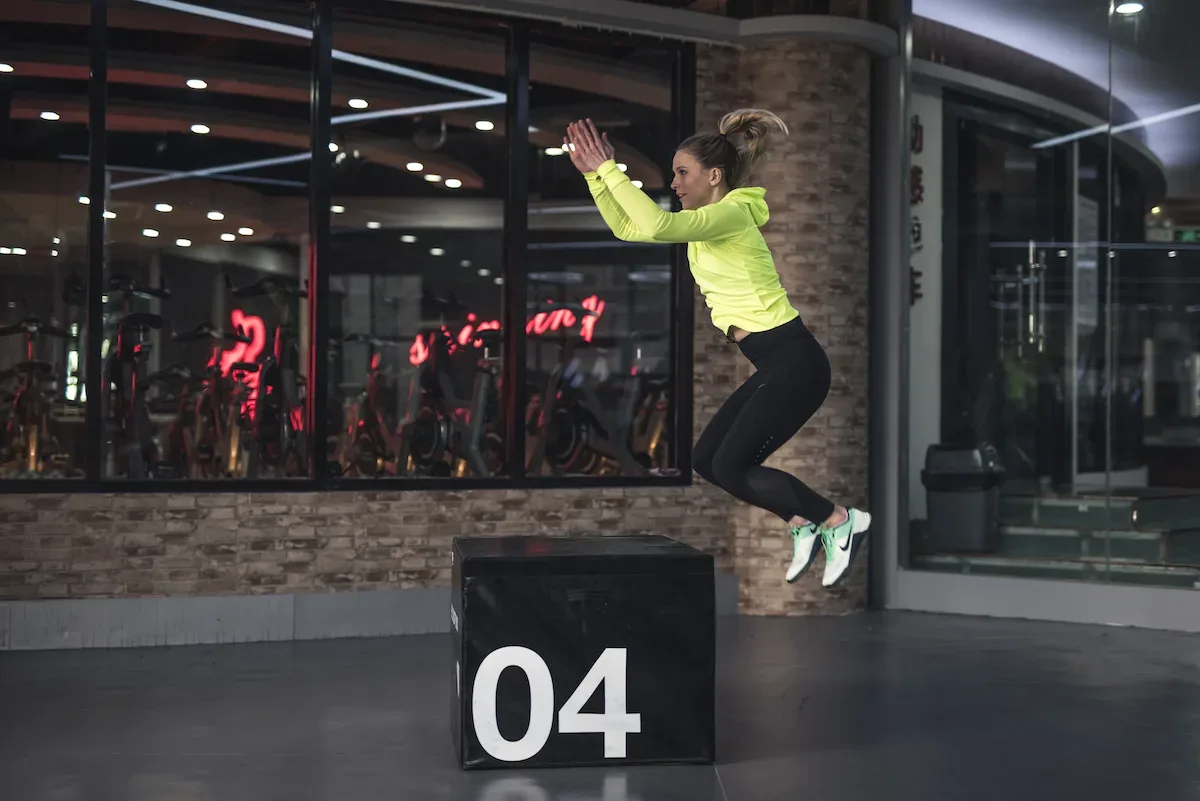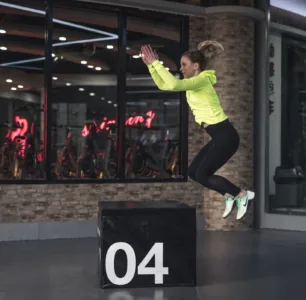If you’re an athlete looking to take your performance to the next level, plyometrics could be the key to unlocking your explosive potential. Plyometrics is a type of training that involves explosive movements designed to increase power and explosiveness in athletes. In this article, we’ll take a closer look at what plyometrics is, how it works, and how you can incorporate it into your training regimen to improve your athletic performance.
What is Plyometrics?
Plyometrics, also known as jump training or “plyos,” is a type of training that involves explosive, high-intensity movements designed to increase power, speed, and explosiveness in athletes. The goal of plyometrics is to improve an athlete’s ability to generate force quickly, which is essential for success in sports such as basketball, football, volleyball, and track and field.
How Does Plyometrics Work?
Plyometric exercises typically involve jumping, hopping, bounding, and other explosive movements that require the muscles to contract quickly and powerfully. These movements increase the stretch-shortening cycle (SSC) of the muscles, which refers to the ability of the muscles to stretch and contract rapidly.
When you perform a plyometric exercise, such as a depth jump or a box jump, your muscles stretch as you land, which stores elastic energy. This energy is then released as you jump or explode upward, resulting in a more powerful and explosive movement. By training the SSC of your muscles, you can improve your ability to generate force quickly, which can translate to better athletic performance.
Benefits of Plyometrics
Plyometrics can offer a variety of benefits for athletes, including:
- Increased power and explosiveness: Plyometrics can help athletes generate more power and explosiveness, which can translate to better performance in sports.
- Improved speed and agility: Plyometrics can also improve an athlete’s speed and agility, as it trains the muscles to contract quickly and efficiently.
- Reduced risk of injury: Plyometrics can improve an athlete’s ability to absorb force, which can reduce the risk of injury during sports and other physical activities.
- Greater overall athleticism: Plyometrics can improve an athlete’s overall athleticism by training a variety of physical qualities, including power, speed, agility, and coordination.
Incorporating Plyometrics into Your Training Regimen
If you’re interested in incorporating plyometrics into your training regimen, it’s important to do so safely and effectively. Here are some tips to get started:
- Start with the basics: Begin with simple plyometric exercises, such as jump squats or box jumps, and gradually increase the intensity and complexity of your workouts over time.
- Focus on proper form: Plyometrics require proper form to be effective and safe. Make sure you have good landing mechanics and that you’re using proper jumping and landing techniques.
- Allow for proper recovery: Plyometrics can be intense, so it’s important to allow for proper recovery time between workouts. Aim to do plyometric exercises no more than twice a week, and make sure you’re getting enough rest and recovery time between workouts.
- Consult a professional: If you’re new to plyometrics or have any concerns about your training, it’s always a good idea to consult with a professional coach or trainer who can help you develop a safe and effective training plan.
The stretch-shortening cycle
The stretch-shortening cycle (SSC) is a physiological mechanism that plays a key role in plyometric training. It refers to the process by which the muscles stretch prior to contracting in an explosive movement, allowing for a more powerful contraction.
During the eccentric (lengthening) phase of a movement, such as when an athlete jumps down from a box, the muscles lengthen and store energy. This energy is then released during the concentric (shortening) phase, such as when the athlete jumps back up onto the box. The rapid stretch of the muscle during the eccentric phase allows for a greater force production during the concentric phase, resulting in a more powerful and explosive movement.
The SSC can be trained through plyometric exercises such as jump squats, box jumps, and depth jumps. By increasing the speed and intensity of these exercises, athletes can improve their ability to rapidly stretch and contract their muscles, leading to improved power, speed, and explosiveness.
However, it’s important to note that plyometric training should be done with caution and proper technique to avoid injury. Athletes should gradually progress the intensity and volume of their plyometric training over time and ensure they have adequate rest and recovery between workouts. Consulting with a professional coach or trainer can also help ensure safe and effective plyometric training.
Plyometrics for Rugby
Plyometrics can be a highly effective training tool for rugby players looking to improve their explosiveness, power, speed, and agility on the field. Here are some ways plyometrics can benefit rugby players and some specific exercises that can be incorporated into a training program:
Benefits of Plyometrics for Rugby Players:
Increased power
Rugby is a physically demanding sport that requires explosive movements such as sprinting, jumping, and tackling. Plyometric training can help rugby players develop the power they need to execute these movements with speed and force.
Improved speed and agility
Plyometric exercises that involve lateral movements and change of direction can help rugby players improve their speed and agility, which is crucial for evading defenders and making quick cuts on the field.
Reduced risk of injury
Plyometric training can improve an athlete’s ability to absorb force, which can reduce the risk of injury during the high-impact collisions and tackles that are common in rugby.
Increased endurance
Plyometric training can also help rugby players develop the explosive power they need to maintain their speed and power throughout a match, even as fatigue sets in.
Specific Plyometric Exercises for Rugby Players:
Jump Squats
Jump squats are a classic plyometric exercise that can help rugby players develop explosive power in their legs. Start by standing with your feet shoulder-width apart, then squat down and explosively jump up as high as you can. Land softly and repeat for several reps.
Box Jumps
Box jumps are another great exercise for developing power and explosiveness in the legs. Start by standing in front of a sturdy box or platform, then explosively jump up onto the box. Step down and repeat for several reps.
Lateral Bounds
Lateral bounds are an excellent exercise for improving agility and lateral movement, which is essential for rugby players. Start by standing on one leg, then explosively jump laterally onto the other leg. Land softly and repeat for several reps before switching to the other leg.
Tuck Jumps
Tuck jumps are a challenging plyometric exercise that can help rugby players develop explosive power and speed. Start by standing with your feet shoulder-width apart, then jump up and tuck your knees to your chest in mid-air. Land softly and repeat for several reps.
When incorporating plyometrics into a training program for rugby players, it’s important to start slowly and gradually increase the intensity and volume of the exercises over time. Consulting with a professional coach or trainer can also help ensure safe and effective plyometric training.
By incorporating plyometrics into their training regimen, rugby players can improve their explosiveness, power, speed, and agility, helping them become stronger and more successful on the field.

